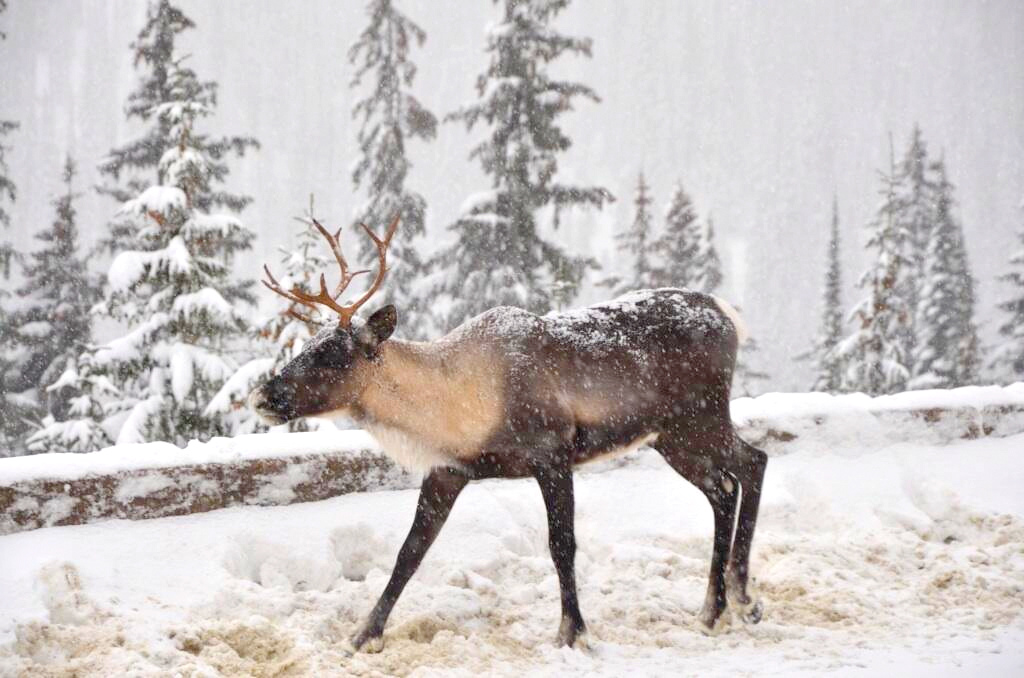By Lisa Bland –
Now that the long winter is over (we hope), the natural world comes alive and is interacting with us, full speed ahead. It’s beautiful to witness nature carrying on with the cycle of rebirth—birds and animals having their young and the busy interactions of all species moving forward with their lives into the season of abundance.

In spring, especially, we witness the extent to which we share our habitat with other life. And while there are many forces that guide us to think all is well in the world beyond human concerns, the reality is we are losing our companions.
Endangered Species Day is coming up on May 18, and it’s an opportunity to understand the importance of protecting endangered species and various actions we can take to help.
How many species are we losing? According to the World Wildlife Fund, this is a difficult question to answer because, despite all our tools for measuring and methods for counting, we still don’t know the extent of what’s out there and new species continue to be discovered. Scientists do know that we’re well on our way into the sixth mass extinction, and unlike the past five known extinction waves across the planet, when more than 76–96 per cent of species disappeared due to events like asteroids, volcanoes, and natural climate shifts, the current crisis is mostly caused by humans.
According to the Centre for Biological Diversity, although extinction is natural and occurs at a “background” rate of about one to five species per year, scientists estimate we’re now losing species at 1,000 to 10,000 times that rate, at dozens per day. As many as 30 to 50 per cent of all species may be extinct by mid-century.
Most human-related threats species face are habitat loss, introduction of exotic species, and climate change. Human development, industrial activity, agricultural expansion, hunting, poaching, pollution, and disease have accelerated the disappearance of species. A cascade effect is also in play as the survival of many species are interlinked in a complex web, leading to accelerations of species loss when ecosystems are irrevocably altered. Species diversity and genetic diversity protect species from being wiped out when ecosystems change rapidly around them.
We often think of endangered species as globally exotic species such as the critically endangered Amur leopard, Black rhino, Malayan tiger, Sumatran elephant, Mountain gorilla, Orangutan, or Vaquita porpoise, but we don’t have to go further than our own backyards to see severe species loss and endangerment.
An inventory of Species at risk in BC can be found at www.speciesatriskbc.ca/ and BC Conservation Data Centre (www2.gov.bc.ca/gov/content/environment/plants-animals-ecosystems/conservation-data-centre). At present there are 754 Red-listed species (extirpated, endangered, and threatened) and 757 Blue-listed species (special concern). Unfortunately, federal laws protecting species in BC have only been around since 2004 and only preside over aquatic species and those on federal lands, and BC has no legislation with teeth for endangered species.
According to the Western Canada Wilderness Committee, polls show that over 85 per cent of British Columbians want strong legislation that will protect wildlife, yet our governments remain immobilized as species disappear.
In a recent article by Emma Gilchrist of Desmog Canada, “How Canada is Driving Its Endangered Species to the Brink of Extinction,” she describes how BC has some of the worst species protection laws due to the majority of species protection being left up to the province, which is also responsible for resource development. In the US, the Federal Endangered Species Act, enacted over 40 years ago, has been much more successful and legally binding to support long-term protection of species along with industrial development.
Gilchrist describes how most recently in BC, efforts to protect BC Southern mountain caribou took 13 years after they were listed federally and included litigation against the federal government by environmental lawyers to enact their legally binding recovery strategy, with the result that the federal government deferred responsibility back to the province. Similarly, BC’s Northern and Southern orca populations, also listed as threatened and endangered, respectively, ended up with Ecojustice lawyers taking the federal government to court to uphold its own recovery strategy legislation, and to this day it is still not enacted.
After an Emergency Assessment in January of this year, the Committee on the Status of Endangered Wildlife in Canada (COSEWIC) confirmed only 58 Chilcotin River Steelhead trout remain and recommended an Emergency Order under the Species at Risk Act. Given the 81 per cent population decline, on March 20, the Tŝilhqot’in National Government closed all fishing, forgoing their collective Aboriginal right to fish Steelhead for food, social, and ceremonial purposes. The major causes of decline were listed as ocean conditions and by-catch from commercial fisheries.
A ban on grizzly bear hunting went into effect in BC on April 1, an example where public consultation and pressure led to action by the government to protect a species. However, it still does not address underlying issues of habitat loss and degradation.
There is no doubt unsustainable human activity is driving the era of mass extinctions around the globe. The only way we can hope to save our furred and feathered friends is to push our elected governments into legislating protection and to support all efforts underway. Please get involved, starting with your local elected representatives, and speak for the future of all creatures. The time to act is now.
